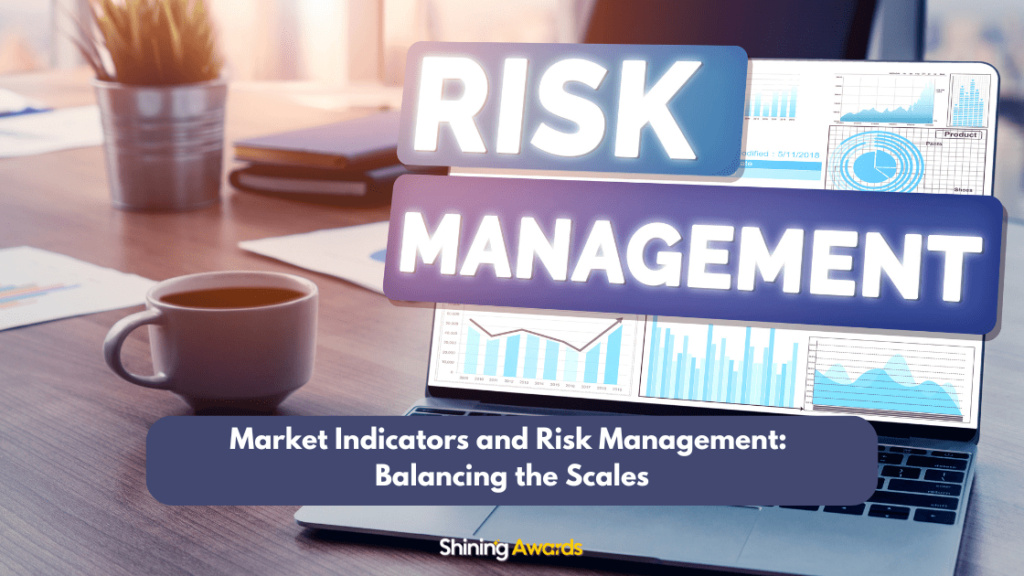Market Indicators and Risk Management: Balancing the Scales
Market Indicators and Risk Management – Amidst the intricate world of finance, the fusion of market indicators and risk management emerges as a beacon of stability. As investors navigate the ebbs and flows of economic landscapes, understanding these pillars becomes paramount. This article delves into the symbiotic relationship between market indicators and risk management, exploring how their integration fosters informed decision-making and financial resilience. So, if you are a newbie in the world of investing, education firms can help you by connecting you to one of many investment education firms out there so that you can learn more about investing.
Market Indicators and Risk Management

Leveraging Market Indicators in Risk Assessment
Market indicators serve as invaluable tools in the realm of risk assessment, providing insights that enable informed decision-making. By leveraging leading indicators, investors gain a proactive stance, allowing them to anticipate market trends and potential risks before they materialize.
These indicators, such as GDP, consumer confidence index, and PMI, offer valuable signals about the direction of the economy, empowering investors to adjust their strategies accordingly.
In parallel, lagging indicators play a crucial role in providing a retrospective view of economic performance. These indicators, including the unemployment rate, inflation rate, and corporate profits, offer insights into past trends and developments, serving as a foundation for risk assessment.
By analyzing lagging indicators, investors can gain a deeper understanding of historical patterns, identifying potential risks and opportunities based on past performance.
Moreover, coincident indicators provide real-time insights into economic activity, offering a dynamic perspective on current market conditions. Indicators such as retail sales, industrial production, and personal income offer immediate
feedback on the state of the economy, enabling investors to adapt their strategies in response to changing circumstances. By incorporating coincident indicators into risk assessment processes, investors can enhance their ability to navigate volatile market conditions and mitigate potential risks effectively.
By integrating these diverse sets of market indicators into risk assessment frameworks, investors can develop a comprehensive understanding of the prevailing market dynamics.
This integrated approach allows for a nuanced assessment of risks and opportunities, enabling investors to make well-informed decisions that align with their financial objectives.
By leveraging leading, lagging, and coincident indicators in tandem, investors can effectively anticipate market movements, identify emerging risks, and capitalize on opportunities for growth and stability.
Building Resilient Strategies with Risk Management Tools
In the ever-evolving landscape of financial markets, the ability to build resilient strategies is paramount to long-term success. Risk management tools play a pivotal role in this endeavor, providing investors with the means to protect their portfolios against adverse movements and unexpected events.
Diversification stands as one of the cornerstone strategies in risk management, allowing investors to spread their risk across a diverse range of assets.
Additionally, hedging serves as a crucial tool for mitigating specific risks within a portfolio. By employing derivatives such as options and futures, investors can protect against fluctuations in asset prices, safeguarding their portfolios against potential losses. Furthermore, insurance offers another avenue for transferring risk to third parties, providing investors with additional layers of protection against unforeseen circumstances.
Contingency planning represents yet another essential component of resilient risk management strategies. By anticipating potential scenarios and developing contingency plans, investors can prepare themselves to respond effectively to unexpected events.
Whether through establishing emergency funds or implementing exit strategies, proactive contingency planning empowers investors to navigate turbulent market conditions with confidence and composure.
Case Studies: Real-World Applications of Integrated Approaches
Real-world case studies offer valuable insights into the practical application of integrated approaches to market indicators and risk management. By examining successful examples, investors can gain a deeper understanding of how these strategies can be effectively implemented to achieve desirable outcomes.
One such case study involves a global investment firm that successfully navigated the 2008 financial crisis through a combination of proactive risk management and strategic use of market indicators.
By closely monitoring leading indicators such as housing market trends and credit spreads, the firm identified early warning signs of impending market turbulence. In response, they diversified their portfolio across asset classes, reduced exposure to high-risk investments, and implemented hedging strategies to protect against potential losses.
Another compelling case study revolves around a tech startup that leveraged market indicators to inform their risk management strategy during a period of rapid growth. By analyzing lagging indicators such as revenue growth and profitability metrics, the company identified areas of vulnerability and implemented measures to strengthen their financial position.
Through prudent risk management practices, including cash flow management and debt restructuring, the startup successfully weathered challenging market conditions and emerged stronger than ever.
Conclusion
In the ever-evolving realm of finance, achieving equilibrium between market indicators and risk management stands as the cornerstone of success. By harnessing the predictive power of indicators and the protective shield of risk management, investors can navigate turbulent waters with confidence. As we forge ahead, let us embrace the synergy between these disciplines, paving the path towards enduring prosperity in the unpredictable terrain of financial markets.
